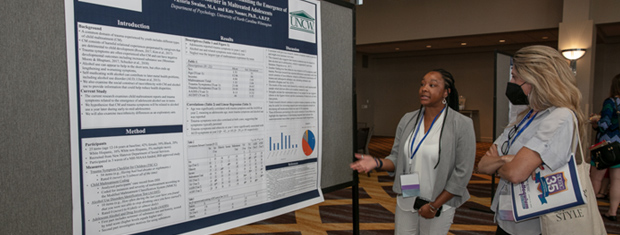




The APSAC Advisor is a peer reviewed quarterly news journal for professionals in the field of child abuse and neglect.
The APSAC Advisor provides succinct, data-based, practice-oriented articles that keep interdisciplinary professionals
informed of the latest developments in policy and practice the field of child maltreatment. It is designed to highlight
best practices in the field and publish original articles and current information about child maltreatment for professionals
from a variety of backgrounds including medicine, law, law enforcement, social work, child protective services, psychology,
public health and prevention in the U.S.
 If you wish to learn more about submitting an article to the Advisor, please click here.
If you wish to learn more about submitting an article to the Advisor, please click here.
This library contains Advisor issues dating back to the first issue in 1988. The most recent issue appears at the top.
Scroll down to select past issues by year and issue number. Once a publication appears in the box, you
can use the Enlarge button to open the document in a new window or tab (depending on how your browser is set up).
This will allow you to view the document with larger print.
To print a document, first use the Enlarge button to open the document in a new window or tab. Then use your browser's Print command.
To return here from a new tab, close the tab. To return from a new window, click your browser's Back button.
In the listing below, click on a year and issue number to see the articles in that publication.
2023 Number 2
This article aims to examine cultural factors that impact ethnically diverse families who come into contact with the child welfare system and, more specifically, to highlight limitations regarding applications with Middle Eastern and North African (MENA) families. Much of the existing literature is focused on Latinx and African American/Black families in the United States. For this reason, researchers first aimed to highlight some of the specific, unique barriers that non-English speaking and non-Spanish speaking ethnically diverse families face when interacting with the legal systems. Many of these are first- or second-generation immigrant families whose native cultures and languages are not widely represented in the United States. Then, using a case study based on a first-generation immigrant family from North Africa, we provide an exploratory analysis of the additional disparities that MENA families may face outside what is commonly known to affect all ethnically diverse families. The case study is based on an interview completed with a social worker who was directly involved in the case. It underscores the need for more inclusive resources, including but not limited to interpretive services; doing due diligence to limit separation, when possible, in dependency cases; the need for more comprehensive cultural education for providers; and the need for additional research aimed at supporting these families.
The sub-Saharan African (SSA) immigrant population in the United States has continued to grow since the 1970s. Despite SSA immigrant families facing elevated risks of becoming involved with U.S. child welfare systems due to their intersectional identities as Blacks, immigrants, and predominant low-income status, there is limited research focused on how this population understands the child welfare system in the United States. This qualitative study sought to bridge this gap by gaining insight into the dynamics between SSA immigrant parents and U.S. child welfare systems. Using purposive and snowball sampling techniques, 15 SSA immigrant parents in Delaware and Pennsylvania were recruited for this study. Two major themes emerged from the interview data: risk factors and protective factors. Eleven subthemes emerged within the two major themes. The study highlights perspectives of SSA immigrant parents on the U.S child welfare system. These perspectives provide important considerations for the U.S. child welfare system.
High infant mortality in U.S. cities is partially the result of socioeconomic status and racial inequity negatively impacting access to preventative care, prenatal care, and nutrition. The majority of cases are confined to low- income neighborhoods where infant mortality is a function of poverty. Using Philadelphia as a model for low- income urban jurisdictions, we have designed a conceptual program that can be implemented nationally to address this problem. Public health programs have made progress, but targeted approaches are evidently needed to provide relief to neighborhoods left behind by current methods. Our group is proposing a targeted multi- focused program, the Milk Truck program, to improve education, access to resources, and follow through with prenatal and postnatal care in these neighborhoods via mobile outreach health clinics. The program is named and modeled after the concept of a 1950’s milkman, where resources are brought to communities in need while requiring little effort on behalf of the recipient. The implementation of Milk Trucks will provide regular access points to prenatal supplementation and formula, food and childcare supplies via gift card/voucher exchanges, clinics providing lactation consultations, healthcare access education, and basic health screenings. Few public health programs addressing infant mortality and birthweight exist in the United States. Those that do have a very narrow focus or can be difficult to navigate and do not address many of the significant socioeconomic barriers low-income populations face. We believe that points of care focused on these underlying causes of high infant mortality in urban neighborhoods will decrease infant mortality rates and improve the quality of life for these residents.
Medical Child Abuse: A Guide for Child Protection Workers
Medical child abuse (MCA) is a complex entity that can take years to accurately diagnose and report to Child Protective Services (CPS). In cases of suspected MCA, CPS is faced with parents who appear to be caring advocates for their child, children who appear to have complex medical issues, fragmentation of medical care among multiple providers and hospitals, and a dearth of standardized protocols for safeguarding children. The purpose of this report is to provide a single, accessible resource on the management of MCA for CPS investigators and child welfare workers. Its intended use is for situations in which there is a referral to CPS made by a medical provider for a concern of MCA.
Estimates of the prevalence of children with disabilities in the child welfare system vary, as only a handful of researchers have investigated this topic. Yet, research has shown that children with disabilities are more likely to experience maltreatment compared to children without disabilities. While all children with disabilities are at greater risk of experiencing maltreatment, those with intellectual and developmental disabilities (IDD) may be at a higher risk. In this article, we summarize the data on maltreatment and its intersection with data on children with disabilities. We then discuss six common myths around children with IDD and offer alternative ideas and viewpoints. Addres ing these misconceptions will help child welfare professionals better understand and support children with IDD.
APSAC Advisor 36(2) - Full Issue